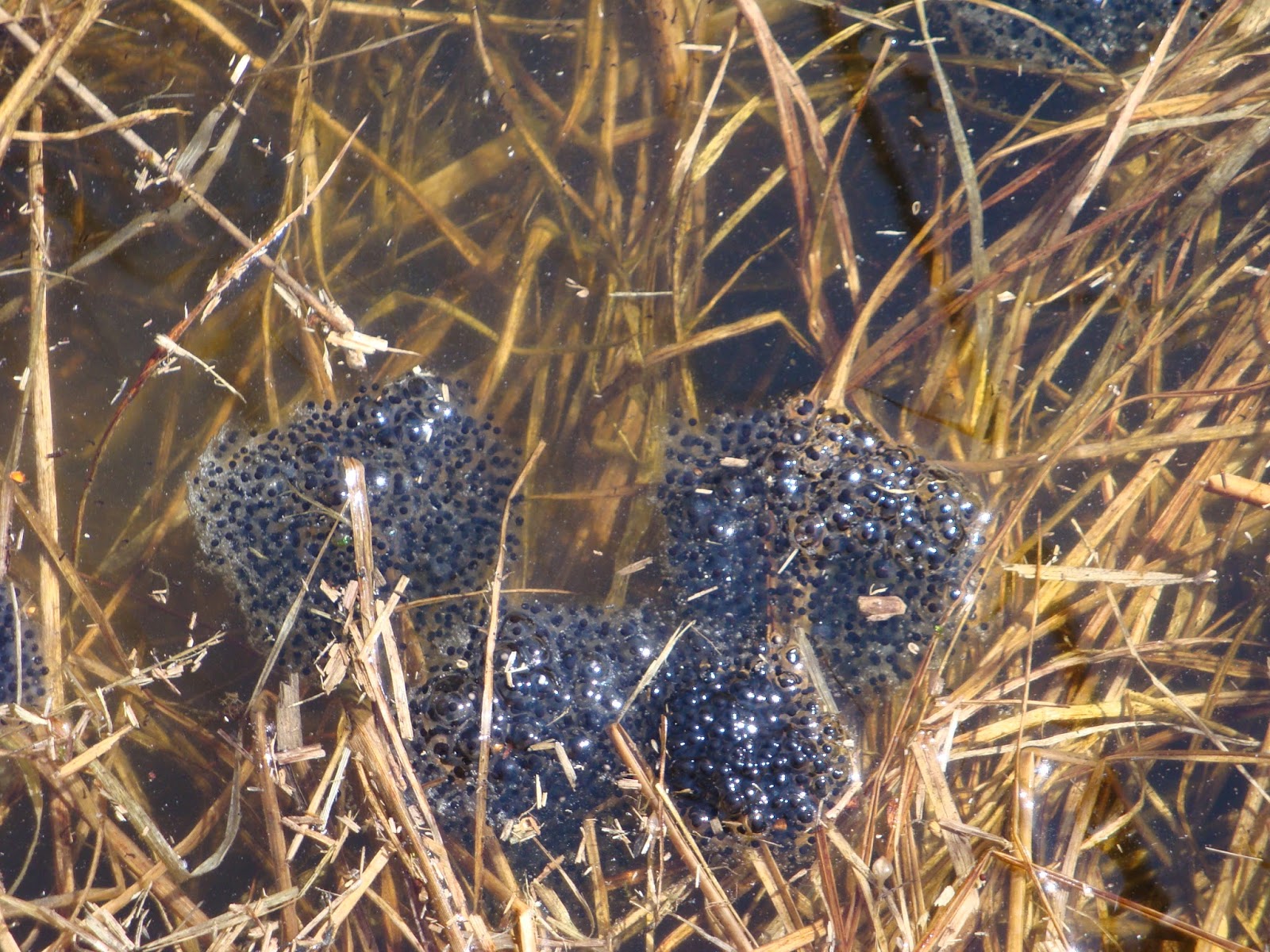Recording of the gray treefrog (from the Amphibian Research and Monitoring Initiative)
These frogs are often mistaken for birds because of their musical trill and calling location.
I recently found one calling from a branch in a small tree near a wetland.
 |
| Gray treefrog (circled in red) in small tree at edge of wetland |
 |
| Zoomed in to see gray treefrog sitting on branch |



















